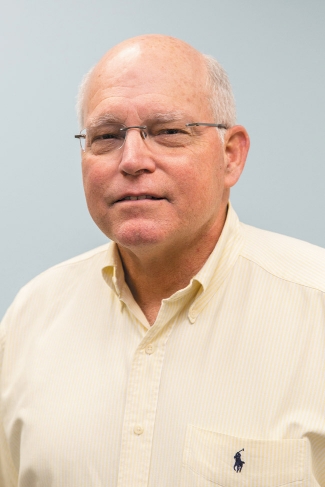Battling Prescription Drug Abuse
Dr. George Mcpheeters
Chief medical officer at UHA Health Insurance
Where did you receive your schooling/training?
I went to Punahou, and then Stanford and UH for medical school. I specialized in surgery.
What is your role with UHA?
As the chief medical officer, I oversee the health care services department – the single largest department in the company – which is involved with trying to assure that our members receive the most appropriate care in a timely fashion. We interact with physicians and other providers to identify members who have complex problems, and engage them in efforts to improve their health. There is a lot of interaction with the team of nurses, who are extremely important to UHA’s mission and vision.
What prompted UHA to create an initiative to control prescription narcotics abuse?
The thought that people are being harmed by any form of prescribed care is alarming, but the rate at which people are dying from prescription drugs, and painkillers in specific, has risen precipitously and continues to rise in an accelerating fashion. These addictions can ruin lives and many families have to go to law firms like Drug Guardians (https://drugguardians.com/) to help get justice for the damage prescription drugs have done to their loved ones. Many of these drugs are renewed without ongoing consideration of the duration of use, whether or not they have been effective and whether or not the patient is using them as ordered. That is not necessarily the doctor’s fault, but payers have data that can help the physicians recognize problems, and our “chronic opioid policy” outlines measures that can make the treatment more effective and definitely safer. Our policies do not regulate pain associated with cancer care or certain other special cases.
Why is prescription narcotics abuse on the rise, and what is UHA doing to control the problem?
The root of the problem lies in a school of thought beginning about 20 years ago that chronic pain can be treated effectively with narcotic medications. As it turns out, enthusiasm for this concept was out of proportion to the evidence. Drug companies formulated that medications which were potent and long-acting – and immensely profitable – and some regulatory agencies became almost preoccupied with pushing physicians to conduct what has been called a “war on pain.” The number of prescriptions for narcotic medications went through the roof by historical standards.
As evidence has accumulated, physicians are learning that chronic opioid therapy is often ineffective, that it can make the pain worse and that there are many serious side effects. UHA is working to assist physicians and patients to understand the roles of risk assessments for narcotic use, the development of needs assessments for long-term-pain medication, the utility of drug screening, the management of pain with multidisciplinary care, and the selection of the best pain medicine for a given patient and a specific diagnosis.
We also are staffed to provide nursing case management, which is an immensely valuable resource that most physician practices cannot individually afford for their patients. Our nurses know how to work with complex medical and psychosocial needs, and they can be very effective medically and very comforting personally to people with pain. Finally, UHA is anxious to help our members gain access to pain-management specialists.
What medications are considered narcotics and most commonly abused?
Morphine and codeine are naturally occurring narcotics derived from opium. Oxycodone and hydrocodone are two of many synthetic narcotics.
What is the difference between opiates and opioids?
Technically, opiates are derived from opium, and opioids are synthetic but chemically similar and pharmacologically like opiates. They are all painkillers, but they have different levels of potency and different degrees of euphoria associated with them. Methadone (a synthetic drug similar to morphine), for example, is long acting but very tricky to prescribe and manage. For simplicity, opioids and opiates and narcotics generally can be used synonymously.
What are the pros and cons of these drugs?
Narcotic analgesics – opiates and opioids – are fantastic agents for the treatment of acute pain such as might occur after an operation or an injury. They can be very good for the treatment of cancer-associated pain and for certain types of long-term pain. The disadvantages relate to life-threatening addiction with serious trauma and death relating to overdose, disruption of hormone balance, severe constipation, depression, fetal malformations when used in pregnancy, lung problems and even immunosuppression.
This is not an exhaustive list, but it gives you an idea of the severity of the side effects. People forget that narcotics, like alcohol, result in injury to innocent people through motor vehicle accidents, gun-related trauma and even theft to support a habit.
Overdosing is leading to tens of thousands of deaths per year and the rate is increasing. People on chronic opioid therapy frequently are on multiple medications including other sedatives.
Some patients escalate doses without consulting a doctor. They might combine medications in a dangerous fashion. Some people share, sell or “loan” their medications. This is called diversion and it is very dangerous, and obviously illegal. Using these medicines for long periods brings on some of the side effects listed above, and they can be life-threatening.
What are the statistics for Hawaii?
Prescription narcotic use and abuse is increasing. Our problem is not as severe, nor is it as widely acknowledged, as it is in Florida and other parts of the country, but it is a potential disaster. The exact number of prescription drug deaths is not known, but is believed to be well over 1,000 per year. The problem is the narcotic associated “fallout” with related emergencies and crime. There are infinitely more prescription drug-related deaths than shark attacks, but the latter get all the attention!






